Digital Fragments in Physical Space: On Andy Boot’s Sculptures
Vivien Trommer
What is a work of art? What is creativity? Why do we believe in the value of art? Today, everyone is creative, whether involved in economics, science, or art. The only difference between working as an artist and most other professions is that artists do not receive a monthly income or regular payment. Otherwise, artists go about their daily working routine much like any other professional: they meet with clients and contractors, they negotiate with partners, they instruct their assistants, and they communicate their goals. So what makes their output so different? What is the value we find in a work of art?
Take Andy Boot’s Untitled (2016),
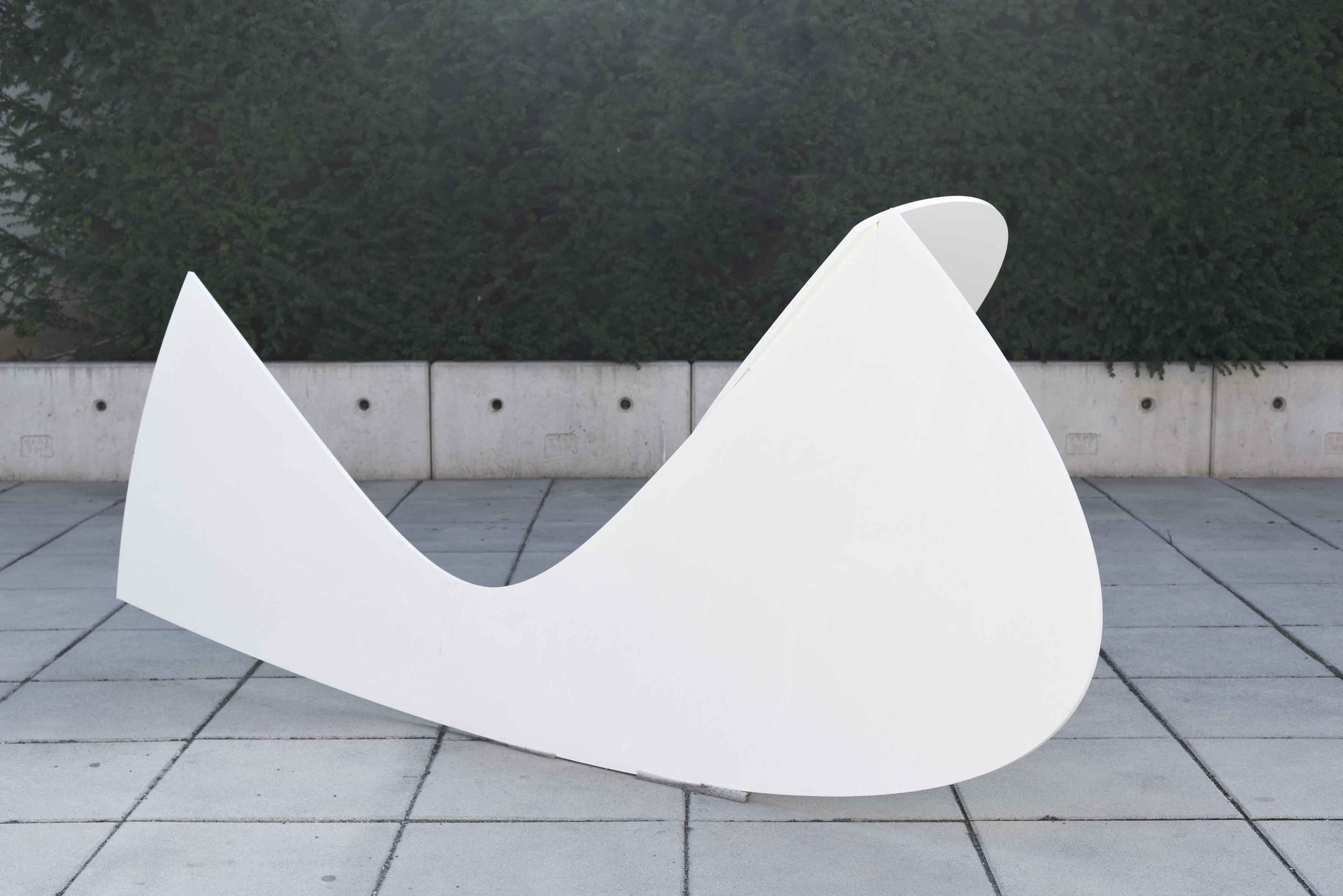 a white-coated steel sculpture permanently installed at the 21er Haus sculpture garden in Vienna. The work is the shape of an abstract image. It seems to have fallen from the sky and landed in the garden, becoming an object-like thing that can be walked around or even crawled through. Its wobbly, rounded-off shapes touch the ground on as few points as possible, fostering the impression that the work is featherlight and floats in space, unimpressed by gravity. A horizontal fold into two flat sides provides strength, so that it supports itself only through its own inert forces. In sculptural terms, the work elaborates on mass and balance to form a freestanding object that is neither a flat painting nor a solid sculpture. It has a certain similarity to Ellsworth Kelly’s first two welded sculptures Gate
and Pony (both 1959), made from painted aluminum, exemplifying what Gottfried Boehm has aptly pointed out as Kelly’s innovation in art history: eluding “painting when he creates a painting, just has he eludes relief and sculpture when he makes use of their possibilities.” 1 Although he would still abide by the terms painting, relief, and sculpture solidified by modernism, Kelly explored the relations between these fields and therefore anticipated the sixties discourse on medium specificity. Boot’s sculpture on the other hand takes up Kelly’s pre-minimalist ideas, investigating the current notions of color and form as paradigms for both painting and sculpture. However, it would be misleading to read Boot’s Untitled as a remake; rather, his work performs an ironic revision of modernist sculpture—a revision of its look, methods of production, and theory.
a white-coated steel sculpture permanently installed at the 21er Haus sculpture garden in Vienna. The work is the shape of an abstract image. It seems to have fallen from the sky and landed in the garden, becoming an object-like thing that can be walked around or even crawled through. Its wobbly, rounded-off shapes touch the ground on as few points as possible, fostering the impression that the work is featherlight and floats in space, unimpressed by gravity. A horizontal fold into two flat sides provides strength, so that it supports itself only through its own inert forces. In sculptural terms, the work elaborates on mass and balance to form a freestanding object that is neither a flat painting nor a solid sculpture. It has a certain similarity to Ellsworth Kelly’s first two welded sculptures Gate
and Pony (both 1959), made from painted aluminum, exemplifying what Gottfried Boehm has aptly pointed out as Kelly’s innovation in art history: eluding “painting when he creates a painting, just has he eludes relief and sculpture when he makes use of their possibilities.” 1 Although he would still abide by the terms painting, relief, and sculpture solidified by modernism, Kelly explored the relations between these fields and therefore anticipated the sixties discourse on medium specificity. Boot’s sculpture on the other hand takes up Kelly’s pre-minimalist ideas, investigating the current notions of color and form as paradigms for both painting and sculpture. However, it would be misleading to read Boot’s Untitled as a remake; rather, his work performs an ironic revision of modernist sculpture—a revision of its look, methods of production, and theory.But what do we mean when we call an object a “sculpture”? A brief glance at history might be illuminating here. In the early twentieth century, artists like Constantin Brâncuși, Marcel Duchamp, Naum Gabo, Alberto Giacometti, Barbara Hepworth, and Alexander Rodchenko, among many others, introduced what we now perceive as modernist sculpture, superseding the ancient Greek ideal depicting human figures, mostly in the gestalt of God and heroes. Made from new materials such as steel, glass, or scrap ingredients, modernist sculpture freed itself from figuration and, in the wave of the avant-garde, became abstract, cubist, constructivist, Dadaist, futurist, kinetic, surrealist—in any case an autonomous work of art. As Rosalind Krauss noted in retrospect, modernism succeeded in not only inventing the readymade, revisiting the logic of the monument, but also in introducing the synthesis of statue and pedestal.2 In late modernism, however, Ad Reinhardt still defined sculpture as “something you bump into when you back up to look at a painting.” 3
It was only in the early sixties—when trained painters like Dan Flavin, Donald Judd, Sol LeWitt, along with sculptors like Carl Andre and Anne Truitt, began to experiment with three-dimensional forms—that sculpture was suddenly given a boost in the US and for a short period of time surpassed painting as the highest form of art. Judd, however, took a radical line and announced that his “specific objects” were “neither painting nor sculpture,” 4 thus severing the ties to previous developments in European sculpture—at least from his perspective. Two years later, in 1967, Robert Morris classified minimal sculpture further and stated—and this was new—that it is made from “industrial and structural materials [which] are often used in their more or less naked state,” 5 and also mostly outside the artist’s studio in professional factories. Fostered by claiming the manufactured geometric cube as sculpture’s new paradigm, Minimal Art quickly became an acknowledged and institutionalized theory and praxis.
With the rise of the Internet and digitization, sculpture underwent its latest radical shift at the beginning of the twenty-first century. Innovations such as 3-D scanning, laser-cutting, or the use of synthetic materials are being explored by artists like Boot, Aleksandra Domanović, Oliver Laric, Mark Leckey, and Pamela Rosenkranz. Digitization, moreover, has had a major impact on processes of artistic research, as David Joselit recently observed: “what matters most is not the production of content, but its retrieval in intelligible patterns through acts of reframing, capturing, reiterating, and revealing.” He concludes that today knowledge is produced “through the aggregation, rather than the production of content.” 6 Having said that, assembling data and information became an integral part of artistic production and clearly had a remarkable influence on contemporary sculpture.
It might seem like a lengthy and yet incomplete journey to recall the achievements in the field of sculpture made during the last century, but all the mentioned shifts offer great tools for a better understanding of Andy Boot’s endeavor. At the core, his investigations incorporate questions about sculpture’s history and its medium-specificity, its engagement with new materials and technologies, and explore its real and virtual quality in times of image and data explosion. Working with new digitized methods of research and production—something that might not be obvious at first glance—Boot deeply reflects on today’s notion of sculpture. It seems essential that we look back at how the steel sculpture Untitled (2016),
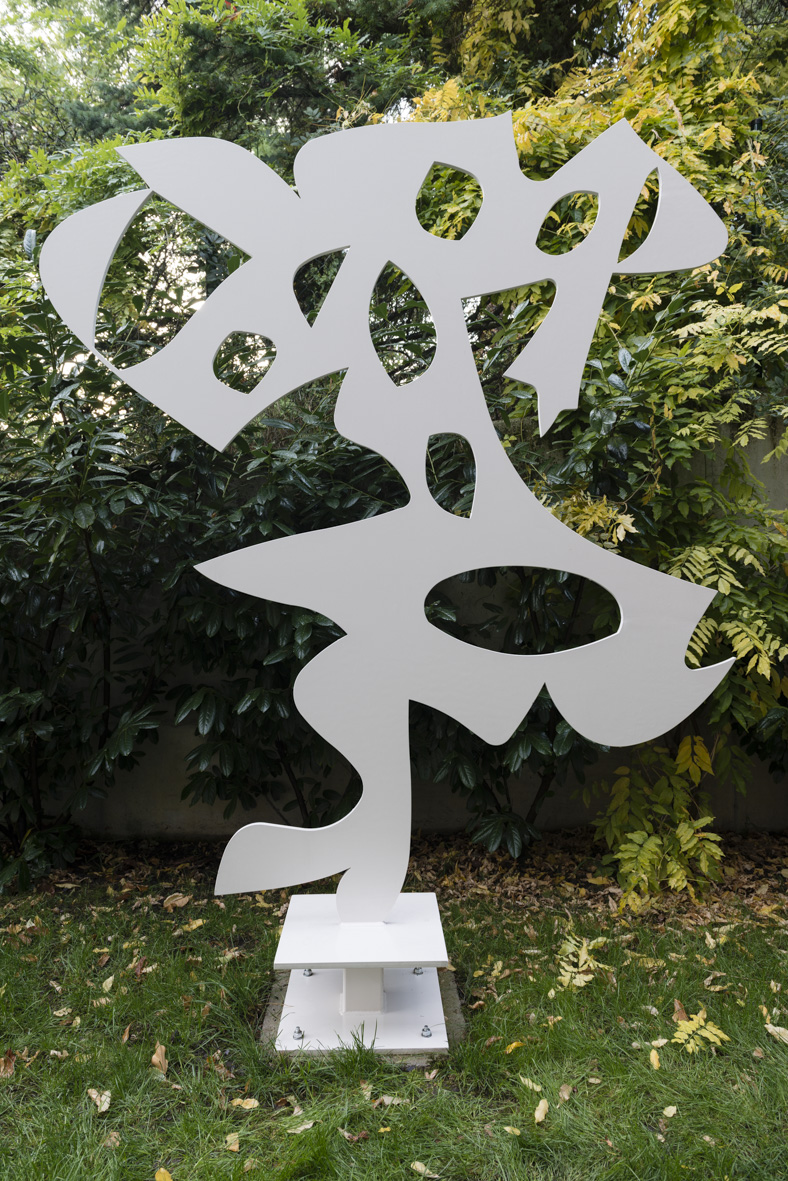 mentioned above, was made. Part of the broader series Cosmic Latte, the work is based on scientific research conducted by the astronomers Karl Glazebrook and Ivan Baldry at Johns Hopkins University, who studied and calculated star formation around the year 2000. As a byproduct of their survey, they detected the average color of the universe while measuring the spectral range of light from about 200,000 galaxies. At first, they determined that the color is mint green before, two months later in March 2002, they found out that it comes closer to a soft vanilla beige, almost a white.7 The study made it into the Washington Post, where Glazebrook jokingly announced that he was still searching for the color’s perfect name. Peter Drum, who read the article at Starbucks while having his daily latte, glanced at the color displayed in the newspaper, then back at his half-empty coffee cup, and dubbed it Cosmic Latte.8 Out of all the suggestions submitted, the team of scientists voted for Drum’s idea and thus a new color was born, which immediately got its own sRGB and Hex triplet codes. Amused by the story and provided with these codes, Boot started to search the Internet for Cosmic Latte-colored images. Adopting methods the scientists used, he identified the hue in random online images to then excise creamy beige color fields using Photoshop. Subsequently, he zoomed in on the cutouts, and with the Simplify algorithm, evened and smoothed all the rough edges, ending up with abstract images in perfectly rounded off shapes. The next step was to turn these virtual sourced images into real beings floating around like stars in galaxies. Having the outlines printed and laser cut in standard MDF with a matte-white paper coating, Boot started to assemble and nail the single shapes together, added a foot or pedestal-like support here and there, and transformed the two-dimensional images into flat freestanding objects elaborating on gravity and balance.
mentioned above, was made. Part of the broader series Cosmic Latte, the work is based on scientific research conducted by the astronomers Karl Glazebrook and Ivan Baldry at Johns Hopkins University, who studied and calculated star formation around the year 2000. As a byproduct of their survey, they detected the average color of the universe while measuring the spectral range of light from about 200,000 galaxies. At first, they determined that the color is mint green before, two months later in March 2002, they found out that it comes closer to a soft vanilla beige, almost a white.7 The study made it into the Washington Post, where Glazebrook jokingly announced that he was still searching for the color’s perfect name. Peter Drum, who read the article at Starbucks while having his daily latte, glanced at the color displayed in the newspaper, then back at his half-empty coffee cup, and dubbed it Cosmic Latte.8 Out of all the suggestions submitted, the team of scientists voted for Drum’s idea and thus a new color was born, which immediately got its own sRGB and Hex triplet codes. Amused by the story and provided with these codes, Boot started to search the Internet for Cosmic Latte-colored images. Adopting methods the scientists used, he identified the hue in random online images to then excise creamy beige color fields using Photoshop. Subsequently, he zoomed in on the cutouts, and with the Simplify algorithm, evened and smoothed all the rough edges, ending up with abstract images in perfectly rounded off shapes. The next step was to turn these virtual sourced images into real beings floating around like stars in galaxies. Having the outlines printed and laser cut in standard MDF with a matte-white paper coating, Boot started to assemble and nail the single shapes together, added a foot or pedestal-like support here and there, and transformed the two-dimensional images into flat freestanding objects elaborating on gravity and balance.Initially in 2013, seven of these low-profile sculptures were presented at Galerie Emanuel Layr in Vienna. Either lying on the floor or standing up straight, they formed a sculpture garden full of modernist compositions and formations. Most of the works, all untitled, including this one (2013),
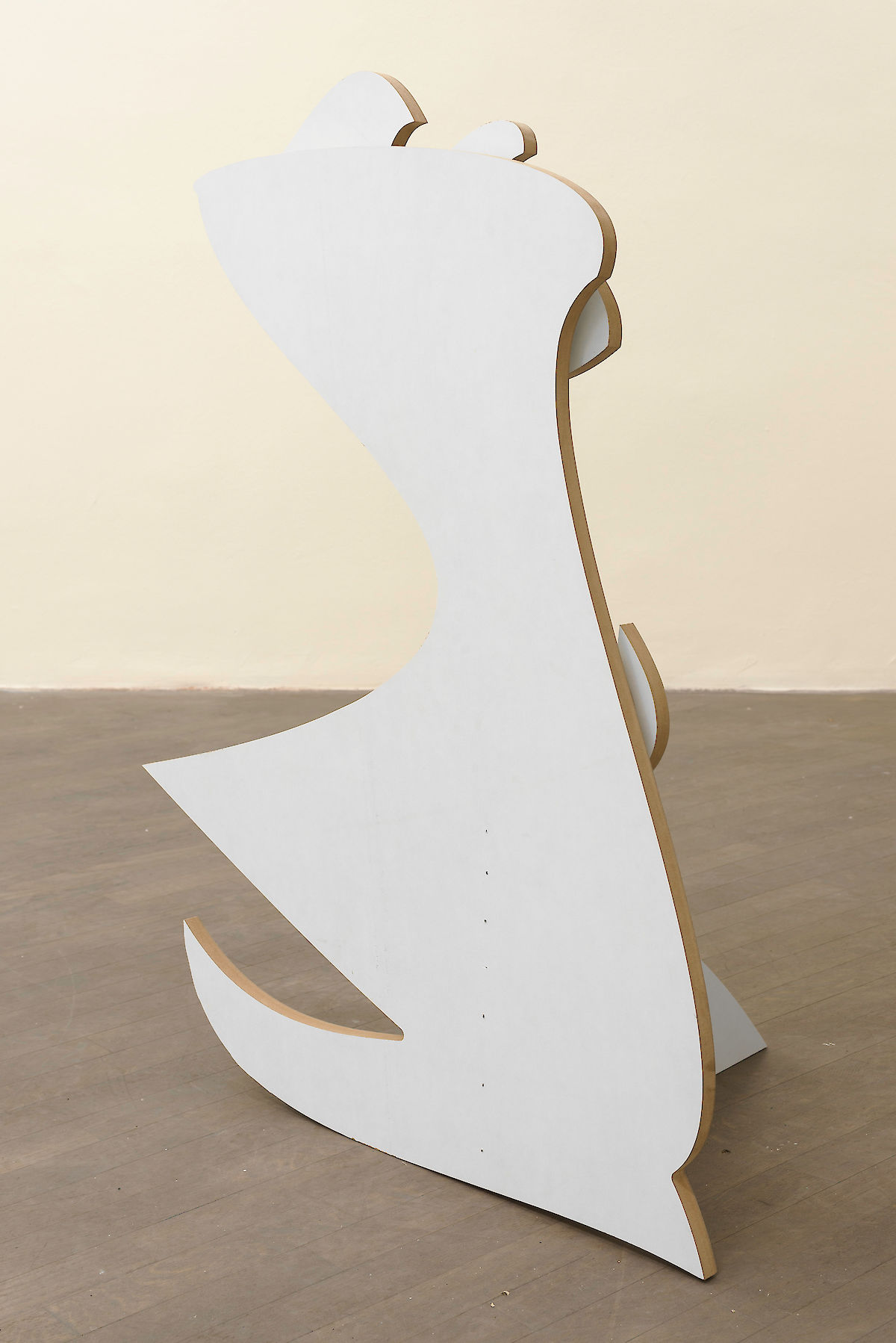 look like weird comic characters, others take the shape of an Ellsworth Kelly relief, or speak of gravity in a sense. For the show the gallery walls were painted in a slightly Cosmic Latte hue, disguising the space as a zero gravity zone. Eventually, in 2016, the series underwent its next step and a group of different shapes was cut in white-coated steel. Among the works was Untitled,
look like weird comic characters, others take the shape of an Ellsworth Kelly relief, or speak of gravity in a sense. For the show the gallery walls were painted in a slightly Cosmic Latte hue, disguising the space as a zero gravity zone. Eventually, in 2016, the series underwent its next step and a group of different shapes was cut in white-coated steel. Among the works was Untitled, 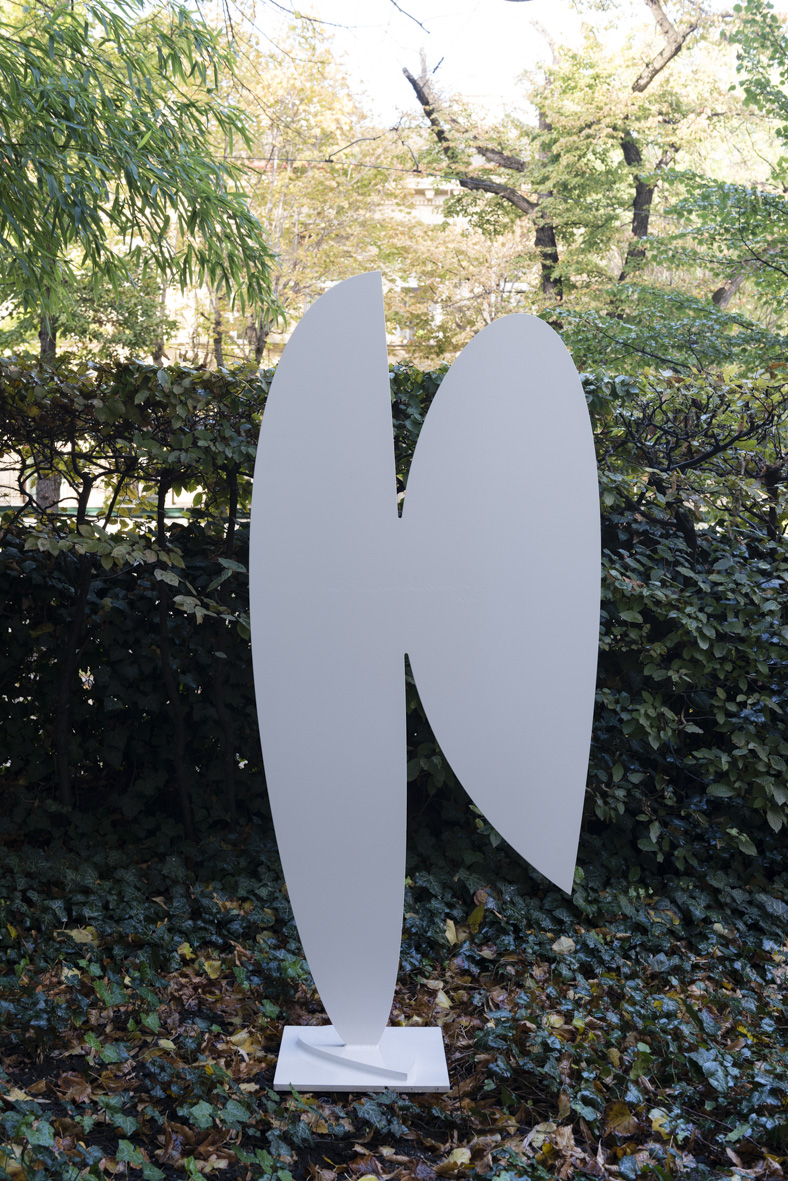 which is installed like the other steel works in public parks or private gardens. They can be perceived as another outcome of this ongoing series, following the same parameters of research.
which is installed like the other steel works in public parks or private gardens. They can be perceived as another outcome of this ongoing series, following the same parameters of research.Above all, it seems obvious that Boot shares formal interests with abstract sculptors and, in a slightly ironic fashion, reflects on the traditional modes of sculpture—its volume, line, texture, color, and appearance in space. But unlike modernist sculptures, his shapes are deployed with digital programs, handed over to commercial factories, where they are converted into objects manufactured from industrial materials using new cutting and carving techniques, and assembled in his studio. His working process embraces chance as much as it makes use of strategic systems and seems to come close to a combination of different theories and praxes on something we have been calling sculpture for about 120 years. Instead of appropriating just the latest look, Boot questions the image quality of sculpture by testing its virtual and physical appearances.
Still, there is something ambiguous about Boot’s works. If we compare the Cosmic Latte series with another series called C C,
 which was presented at Croy Nielsen in Berlin in 2014, we might think they look so different that the same artist could not have made them, just because the formal differences in these works are quite distinct. Or is there a common ground—a shared logic—that is there but difficult to discern?
which was presented at Croy Nielsen in Berlin in 2014, we might think they look so different that the same artist could not have made them, just because the formal differences in these works are quite distinct. Or is there a common ground—a shared logic—that is there but difficult to discern?C C
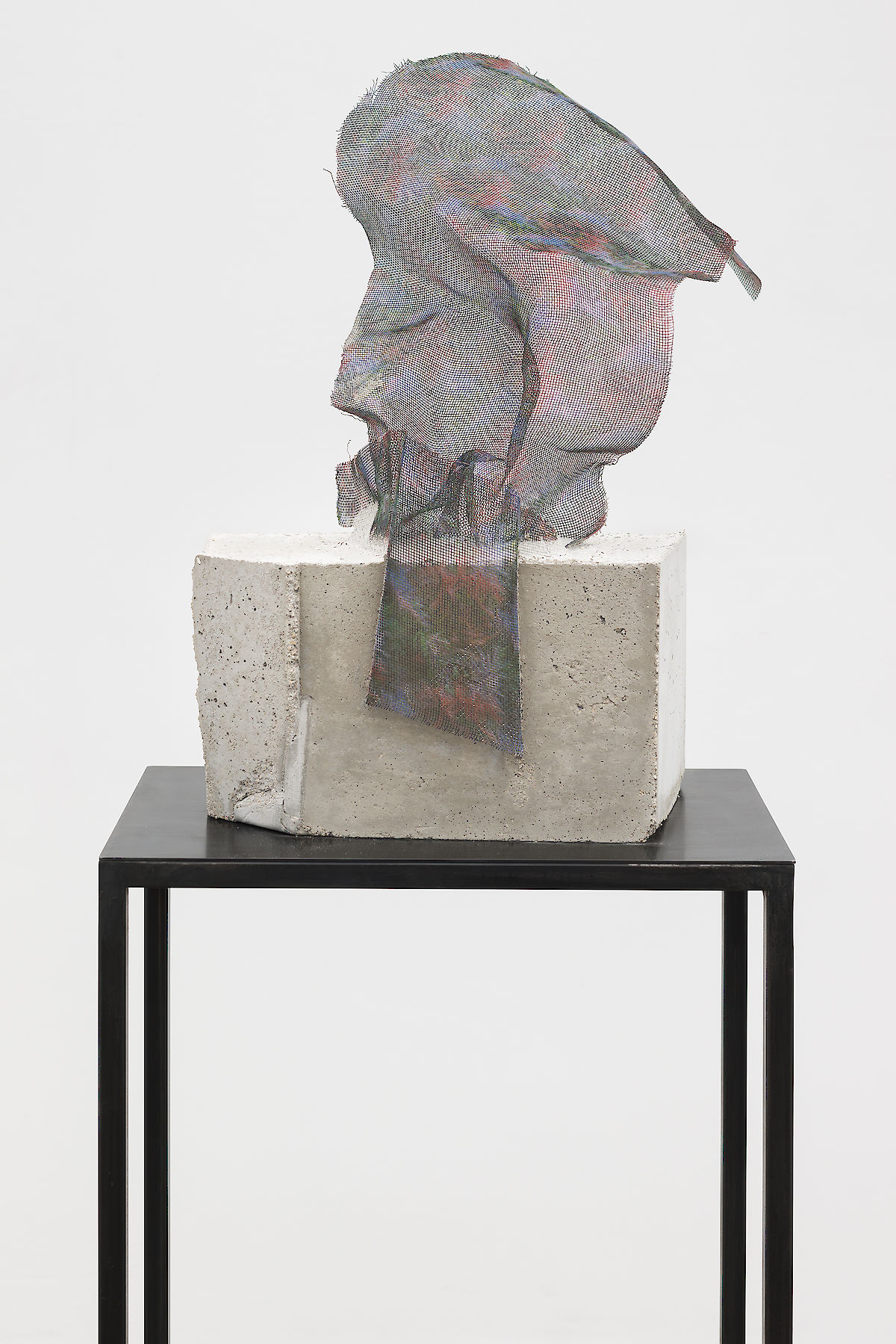 is a series of sculptures in three parts. The first is a pedestal, a minimal construction of black-polished metal that reaches to about belly-height. On its surface, concrete cubes of individual shapes are presented, from which thin metal mesh, coated with colorful prints in violet, bright-blue, or turquoise hues, ripple out into the air. Depending on the angle from which the sculptures are viewed, a dizzying moiré effect shimmers over the planes of the mesh fully exposing their anti-form aesthetic, and contrasting the rigor of their supports.
is a series of sculptures in three parts. The first is a pedestal, a minimal construction of black-polished metal that reaches to about belly-height. On its surface, concrete cubes of individual shapes are presented, from which thin metal mesh, coated with colorful prints in violet, bright-blue, or turquoise hues, ripple out into the air. Depending on the angle from which the sculptures are viewed, a dizzying moiré effect shimmers over the planes of the mesh fully exposing their anti-form aesthetic, and contrasting the rigor of their supports.Visually, they resemble Isa Genzken’s architectural models Halle and Saal (both 1987), concrete works on steel tube stands that she started a decade after having worked on painted wooden sculptures, Ellipsoids and Hyperbolos, that either lay on the floor or are freestanding. Introducing the plinth back into the realm of sculpture, Genzken, as curator Beatrix Ruf has noted, challenges the autonomy of sculpture as a legacy of modernism:
Isa Genzken placed the next group of works of painted and unpainted plaster (from 1984 on) on a plinth, which served to raise the sculpture, the object ... to the public’s eye level. A technique Isa Genzken adopted for many of her subsequent work groups without, however, having herself any interest in classical plinth sculpture, but that referred to the functions of the transformation and autonomy that she attaches to the art object.9
It was Brâncuși who anticipated the discourse on the synthesis of pedestal and sculpture. Since 1910, he preferred his marbles or bronzes to be shown as multipart works, including plinths that were designed specifically to fit each sculpture.10 Boot reactivates and combines shorter versions of Genzken’s stands with Brâncuși’s method to touch upon and emphasize questions of display and modes of presentation that lay within the presence of sculpture. Following formal criteria, C C can be perceived as an investigation into the effects of exhibiting and presenting works of art, questions which have been key for sculptors since early modernism, and today are discussed by artists like Thea Djordjadze, Vincent Fecteau, and Rachel Harrison.
However, looking closer at C C’s subject matter, it turns out that it speaks of a freaky Internet phenomenon—like the Cosmic Latte series. It looks into GeoCities, a free web-hosting platform for personalized homepages that peaked at the end of the nineties prior to Myspace and Facebook. Originally founded in 1994 by David Bohnett and John Rezner, it was acquired by Yahoo! five years later in 1999. Today it is only active in Japan due to a shutdown of the United States GeoCities service on October 26, 2009, when approximately 38 million pages were lost. In its early stage, GeoCities offered a novel directory and was organized as neighborhoods with names like “Heartland,” hosting websites for parenting and family; “South Beach,” presenting pages for a hip spot to hang out, for seeing and being seen; or “Paris,” where subjects like romance, poetry, and the arts were welcomed. During the sign-in process, new members chose the district in which their site should belong. The neighborhood’s name plus a unique number then formed the web address, hence it was location that mattered in this network.11 In homage, Boot’s sculptures carry the neighborhood’s names and as such are titled Heartland (CASA DE DAVI) 1, (2014)
 Heartland (CASA DE DAVI) 2, 2014
Heartland (CASA DE DAVI) 2, 2014 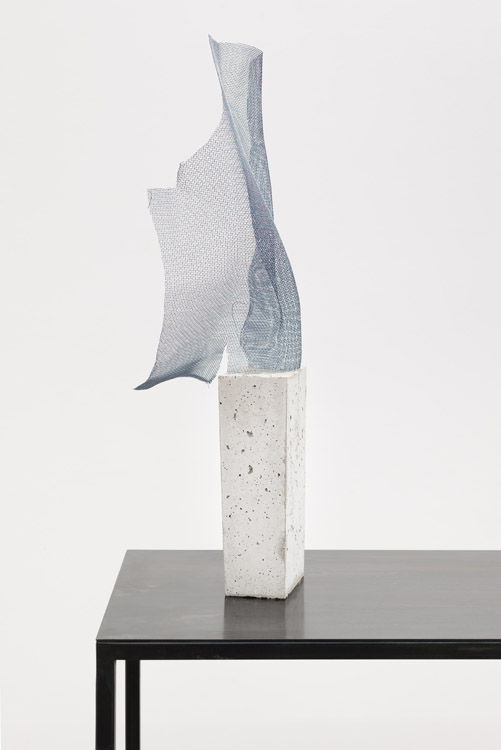
and Paris (cybertrips) 1 (2014)
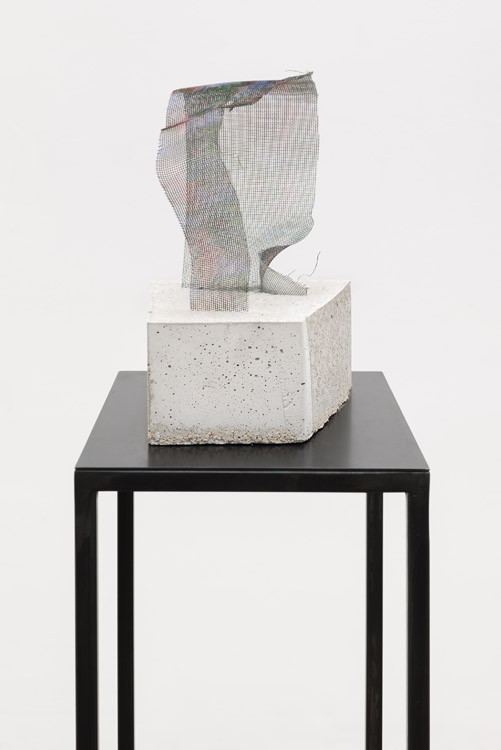
Clearly, GeoCities belonged to an era when websites were still a creative tool and not just a commercial instrument. Its layout was the special feature: a full-screen picture as background on which texts and some fancy GIFs were arranged, so members needed to know a bit of HTML coding to design their own pages. It comes as no surprise that some enthusiasts recently launched a web archive project to rescue and maintain some of the lost websites.12 Stumbling across this collection of defunct sites, Boot was intrigued by their simplicity and creativity and six pages became an integral part of the creation of his C C

sculpture series. Printed on the mesh are backgrounds—GeoCities’s unique feature—that either come about as colorful patterns or as thematic pictures.
In a way, Boot creates an impetus to remember GeoCities and transfers its story from the depths of the Internet into physical space. Displayed as an archive of personalized homepages, C C forms an exhibition of art objects that resemble small tombstones and monuments, thereby creating something like a memorial site that newly defines sculpture’s contemporary realms.
Ina Blom has written that “new media and information technologies are themselves objects of thinking, investigation, and imagination.” This thought encourages her to argue for a need to conceptualize contemporary art’s “double relation to, on the one hand, technological media and the realm of media production and, on the other hand, the notion of the artistic medium.” 13 She concludes that the human body that senses the effects of digital information has become the medium in contemporary art. With that in mind, Boot’s C C and Cosmic Latte
 series test the relation between two-dimensional images, sourced from the Internet as just a chain of data, and the bodily experience of their three-dimensional counterparts in real space. They do this by pretending to follow the features of modernist sculpture—three-dimensionality, plasticity, multi-perceptivity, and bodily experience. In short, both series investigate the notions of the image, sculpture, and space—the work of art—in the digital age.
series test the relation between two-dimensional images, sourced from the Internet as just a chain of data, and the bodily experience of their three-dimensional counterparts in real space. They do this by pretending to follow the features of modernist sculpture—three-dimensionality, plasticity, multi-perceptivity, and bodily experience. In short, both series investigate the notions of the image, sculpture, and space—the work of art—in the digital age.Finally, coming back to the question of art and its value, it seems striking how today works of art engage in the dynamics of our knowledge. Information, in the current times of data explosion and technological innovation, is mostly pooled on servers and external hard drives, and will only be accessible as long as these systems are accessible (see the GeoCites example). Thinking, as suggested by Boot, about the transformation of digital data into physical space is a mechanism for cultural preservation and its vitality, a form of archeology. This is where art’s value can be recognized; in the creation of meaningful objects that speak about our culture and that, preserved and promoted in museums, can be passed on to future generations. Art captures a certain zeitgeist. It is able to preserve valuable moments of our time, protects the past from vanishing and disappearing, and makes information accessible. Andy Boot’s practice thus provides a way to keep our knowledge alive.
Notes
-
Gottfried Boehm, “In-Between
Spaces: Painting, Relief, and
Sculpture in the Work of
Ellsworth Kelly,” in Ellsworth
Kelly: In-Between Spaces,
Works 1956–2002, exh. cat.
Fondation Beyeler, Riehen/
Basel (Berlin, 2003), p. 19.
-
Rosalind E. Krauss, “Sculpture
in the Expanded Field,” in October (Spring 1979), p. 34.
- Quoted after a statement at a dinner in the late fifties in Lucy R. Lippard, “As Painting is to Sculpture: A Changing Ratio,” in American Sculptures of the Sixties, edited by Maurice Tuchman, exh. cat. Los Angeles County Museum (Los Angeles, 1965), p. 31.
-
Donald Judd, “Specific
Objects,” in Donald Judd Writings, edited by Flavin Judd
and Caitlin Murray (New York
and London, 2016), p. 135.
-
Robert Morris, “Notes on
Sculpture, Part 3: Notes and
Non Sequiturs” in Continuous
Project Altered Daily: The
Writings of Robert Morris, An
October Book (Massachusetts
and London, 1995), p. 28.
-
David Joselit, “Conceptual
Art 2.0” in Contemporary Art: 1989 to the Present, edited by Alexander Dumbadze and Suzanne Hudson (New Jersey, 2013), p. 160. -
Michael Purdy, “Astronomers
Determine Color of the Universe,” last modified
January 10, 2002, http://
pages.jh.edu/news_info/
news/home02/jan02/color.
html (accessed July 22, 2017);
and the press release update,
Michael Purdy, “Astronomers
Determine Color of the
Universe,” last modified March
7, 2002, http://pages.jh.edu/
news_info/news/home02/
mar02/color.html (accessed
July 22, 2017).
-
“Cosmic Latte,” Wikipedia, last
modified April 24, 2017, http://
en.wikipedia.org/wiki/Cosmic_
latte (accessed July 21, 2017
-
Beatrix Ruf, “Contact” in Isa
Genzken, edited by Veit Loers
and Beatrix Ruf, exh. cat.
Kunsthalle Zurich and Museum
Abteiberg, Mönchengladbach
(Cologne, 2003), p. 11.
-
Nina Gülicher, Inszenierte
Skulptur: Auguste Rodin,
Medardo Rosso, Constantin
Brancusi (Munich, 2011), pp.
133–42.
-
“Yahoo! GeoCities,” Wikipedia,
last modified June 25, 2017,
https://en.wikipedia.org/wiki/
Yahoo!_GeoCities (accessed
July 31, 2017).
-
http://www.geocities.ws/
archive/.
- Ina Blom, “Inhabiting the Technosphere: Art and Technology Beyond Technical Innovation” in Contemporary Art: 1989 to the Present, edited by Alexander Dumbadze and Suzanne Hudson (New Jersey, 2013), p. 149.